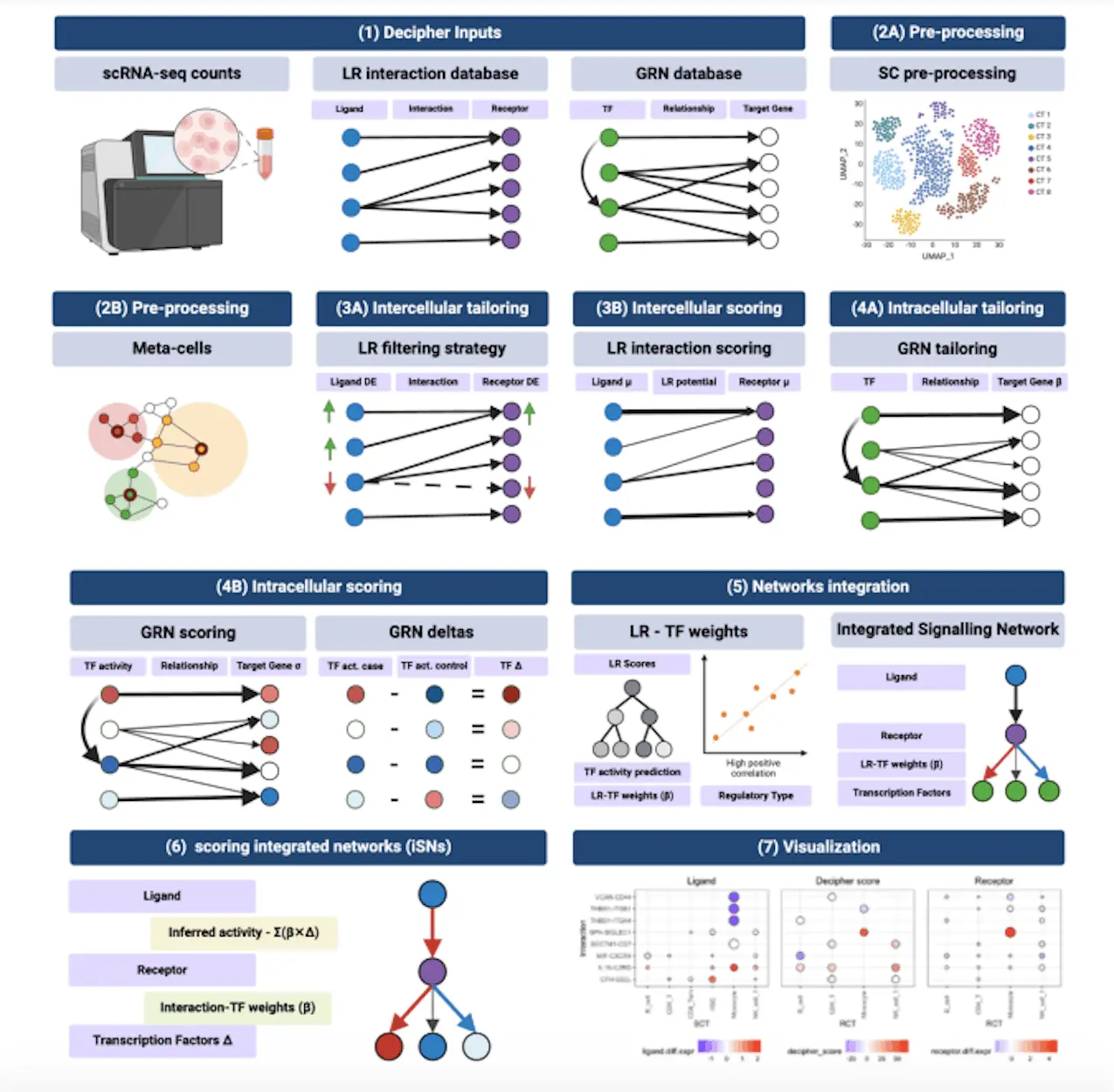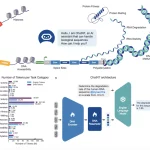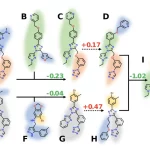Scientists from the Central South University, China, developed a novel Tumor Treating Fields ‘TTFields’ system named “CL-301A” and showcase its efficacy in the suppression of glioblastoma cell proliferation and induction of cell apoptosis.
One of the most dangerous types of brain cancer is glioblastoma. The most recent method of treating glioblastoma (GBM) is called tumor treating fields or TTFields. Further research is necessary to understand its chemical mechanism, though.
In the given study, the effectiveness of a novel tumor treating fields system (CL-301A) for inhibiting GBM cell proliferation and causing cell apoptosis was revealed.
Numerous differentially expressed proteins, mRNAs, miRtNAs, lncRNAs, and circRNAs were discovered during the entire proteomic and transcriptome investigations.
According to the bioinformatic investigation, tumor treating fields mostly damaged nucleus proteins and disrupted processes associated with cell mitosis.
Additionally, TTFields’ anti-GBM action may be considerably increased by inhibiting autophagy.
Moreover, via controlling CDK2 mRNA stability, CDK2-AS1 may be a target of TTFields to mediate cell cycle arrest.
The mechanism of TTFields was better-understood thanks to this work, which may help with future TTFields research for the treatment of GBM.
Gliomas
The majority of primary brain cancers, or more than 80% of cases, are gliomas. Gliomas are histologically categorized into four grades according to the World Health Organization (WHO) classification, with a higher grade indicating a worse prognosis.
The most dangerous kind of gliomas, known as glioblastoma, belongs to grade IV.
Patients with GBM have a median overall survival (OS) of 14 months, and the five-year OS rate is around 5%.
Radiation therapy, chemotherapy, and surgery are examples of traditional treatments for GBM. However, people with GBM continue to have a terrible prognosis.
Despite the recent development of many cancer therapies, the treatment of GBM has made little progress.
The most popular treatment for GBM patients is temozolomide (TMZ), whose effectiveness has been demonstrated in a clinical trial. When combined with radiotherapy, TMZ dramatically extends the median OS of GBM patients compared to radiotherapy alone.
Bevacizumab and tumor-treating fields (TTFields) are the other two medicines authorized for the treatment of GBM in addition to TMZ.
Electric field therapy called TTFields has been shown to reduce the growth of a variety of tumor cells drastically. The median OS in individuals with recurrent GBM who underwent TTFields treatment was 62.2 weeks, which was significantly longer than the median OS in historical control patients.
The large-scale clinical experiment that showed the combination of TMZ and TTFields significantly extended the progression-free survival and OS of GBM patients compared to TMZ alone provided evidence of the promising efficacy of TTFields.
Currently, the National Comprehensive Cancer Network (NCCN), Chinese Glioma Cooperative Group (CGCG), and Asian Society of Neuro-Oncology have added TTFields to their therapy recommendations for GBM patients (ASNO).
A Design from the Research Team
In the given study, the scientists’ research group created an alternative electric field application TTFields system (CL-301A) that might be used to treat GBM.
Their earlier research has demonstrated the effectiveness of CL-301A in primary GBM cells and a rat model of glioma. However, little is known about the molecular processes that lead to TTFields in GBM.
In this study, they sequenced the entire transcriptome and the entire proteome in GBM cells that had received TTFields treatment with the goal of identifying possible targets and the underlying molecular pathways that underlie TTFields’ ability to combat GBM.
Major Takeaways from the Research
Only three therapies, including the chemotherapeutic medications TMZ and bevacizumab, have been licensed by the Food and Drug Administration (FDA) for the treatment of GBM in the past ten years, despite their effectiveness in extending patient survival.
The innovative therapy TTFields is demonstrating encouraging success in the treatment of newly diagnosed and recurrent GBM. The TTFields molecular process, however, has to be clarified more.
In the given study, the scientists’ research showed that the CL-301A could effectively inhibit GBM cell proliferation and trigger both cell cycle arrest and apoptosis.
Their transcriptional and proteomic sequencing revealed that TTFields mostly interfered with mitosis-related cellular processes, including DNA replication, spindle formation, microtube binding, nuclear division, etc. This result was consistent with other research.
Furthermore, CDK2-AS1 was discovered to be a possible target of TTFields, which the researchers found might block cell autophagy in order to accelerate cell death.
No trial findings or treatment has received widespread acceptance with optimistic efficacy since TMZ was introduced as the first-line therapy for GBM patients in 2005.
Although the use of immunotherapy in the treatment of diseases such as melanoma, urothelial carcinoma, non-small cell lung cancer, and others, it is still difficult to apply in GBM.
Nivolumab, a programmed death-1 (PD-1) inhibitor, did not significantly extend the median OS of patients with recurrent GBM compared to bevacizumab (9.8 months vs. 10.0 months) in a phase III randomized clinical study (CheckMate 143). Therefore, the TTFields’ amazing efficacy gives GBM sufferers new hope.
The scientists’ research team created the TTFields system (ASCLU-300 for human wear device and CL-301A for cell intervention device) based on the anti-mitotic mechanism of TTFields, and its effectiveness was demonstrated both in vitro and in vivo.
A prospective pilot trial that assesses the safety of ASCLU-300 in recurrent GBM has completed its work thus far.
According to the findings, ASCLU-300 is safe for GBM patients, and the most common adverse event is dermatitis (unpublished date), which is in line with prior research and animal trials.
ASCLU-300 is also being tested in a major randomized clinical trial that assesses its effectiveness and safety in treating newly discovered supratentorial GBM.
The scientists’ findings regarding the CL-301A system, which was utilized in this work, showed its effectiveness in inhibiting GBM cell proliferation and inducing cell death.
They hoped to investigate the molecular mechanism of the CL-301A system’s anti-GBM activity after it has been confirmed. After TTFields intervention, few patients would undergo surgery, which resulted in a scarce supply of specimens that had been TTFields-treated. Therefore, they first investigated the fundamental TTFields process using GBM cells.
Previous research suggested that TTFields had two methods for inhibiting the growth of tumor cells: one involved stopping microtubule polymerization, which therefore caused mitotic arrest; the other involved generating dielectrophoresis.
Their investigation found that TTFields mostly affected proteins in the nucleus, and these proteins were linked to cell division, DNA replication, the cell cycle, and other processes. Additionally, after TTFields intervention, nuclear condensation and cytoskeletal disruption were found in the cells.
Their findings suggested that CL-301A could effectively exert anti-GBM activity in conjunction with the NovoTTF-100A System.
Despite the large-scale randomized clinical trial’s demonstration of TTFields’ effectiveness, nothing is known about its molecular mechanism. Their findings that the inhibition of autophagy considerably increased the anti-tumor effect of TTFields were in agreement with some other findings that AMPK-dependent autophagy is boosted as a survival mechanism against TTFields in glioma cells.
In the meantime, the scientists noted that in their data, the level of LC3II/I was up following TTFields and further elevated following CHQ therapy. LC3II/I was enhanced following TTFields but not significantly altered if cells were pre-treated with CHQ, according to our research.
The timing of the CHQ application was the primary difference between the other study and their study.
Their study added CHQ prior to the intervention, whereas the other scientists added it 3–4 hours before the end of the TTFields treatment.
Potentially different outcomes could result from the changing timing. In terms of the distinction, the scientists postulated that GBM cells encouraged autophagy in response to TTFields, which prompted the conversion of LC3I to LC3II.
However, TTFields may prevent lysosomes from degrading an object. Since the lysosome was in charge of degrading the autophagosome, its dysfunction would cause LC3-II to build up. This data also indicated that autophagy was not induced, but rather, the autophagic flux was reduced.
However, following TTFields intervention, the expression of p62, a protein that was primarily destroyed by autophagy, was markedly increased.
As a result, they suggested that TTFields might prevent GBM cell autophagy. However, they found that autophagy inhibition might increase the effectiveness of TTFields and that autophagy was the GBM cells’ defense mechanism against TTFields.
However, since earlier research suggested that the inhibition of autophagy would improve TTFields-mediated cell death, whether autophagy inhibition would promote or mitigate the efficacy of TTFields remained debatable.
Therefore, more research was required to understand and describe the autophagy mechanism during the TTFields intervention.
The scientists want to identify a potential target that mediated the anti-tumor effect of TTFields among the non-coding RNAs and differentially expressed RNAs that have been found.
The function of lncRNAs in regulating biological processes and the emergence of cancer was still unknown despite emerging evidence to the contrary.
They chose cell cycle-related genes to build an mRNA-lncRNA co-expression network as a result of the anti-mitotic action, with CDK2-AS1 chosen following preliminary experimental findings. CDK2-AS1 is a member of a significant part of lncRNAs referred to as antisense.
Previous research suggested that the antisense lncRNA may enhance or decrease the mRNA stability of sense genes, hence promoting the development of cancer. For instance, LDLRAD4-AS1 may reduce LDLRAD4’s mRNA stability to encourage the spread of colorectal cancer.
Additionally, FOXC2-AS1 may improve FOXC2’s mRNA stability to encourage doxorubicin resistance in osteosarcoma.
Similar to this, PRC2 may be recruited by HOXD-AS1 to inhibit HOXD3 transcription, which in turn reduces colorectal cancer proliferation and migration.
In this study, the scientists found that CDK2-AS1 may be a potential target of TTFields as its knockdown could increase TTFields’ anti-tumor effect against GBM cells.
In terms of mechanics, CDK2-AS1 might improve CDK2’s mRNA stability. Because of this, they proposed that TTFields might lower the expression of CDK2-AS1, which might lower the stability of mRNA and the expression of CDK2, resulting in cell cycle arrest.
They have shown that inhibiting autophagy can improve the anti-tumor effects of TTFields, however, the key molecular target and mechanism by which TTFields regulate autophagy are yet unknown.
Furthermore, because our work used immortal cells, it was impossible to characterize how the tumor microenvironment changed following TTFields.
Their earlier research developed an integrated system that could mimic the glioma microenvironment utilizing cerebral organoids and xenografts produced from patients with gliomas.
A deeper understanding of the role played by TTFields in the treatment of GBM would result from the investigation of their impact on this integrated system.
In conclusion, this study drew the expression landscape of DEPs and RNAs, including coding and non-coding RNAs, using whole-transcriptional and whole-proteomic sequencing.
Combining bioinformatic analysis with experimental data demonstrated that TTFields’ anti-tumor effects could be strengthened by inhibiting autophagy.
Additionally, TTFields may aim at CDK2-AS1 to reduce CDK2 mRNA stability and cause cell cycle arrest. Their research would offer fresh perspectives on how TTFields work to treat GBM.
Article Source: Reference Paper
Learn More:
Top Bioinformatics Books ↗
Learn more to get deeper insights into the field of bioinformatics.
Top Free Online Bioinformatics Courses ↗
Freely available courses to learn each and every aspect of bioinformatics.
Latest Bioinformatics Breakthroughs ↗
Stay updated with the latest discoveries in the field of bioinformatics.
Tanveen Kaur is a consulting intern at CBIRT, currently, she's pursuing post-graduation in Biotechnology from Shoolini University, Himachal Pradesh. Her interests primarily lay in researching the new advancements in the world of biotechnology and bioinformatics, having a dream of being one of the best researchers.






